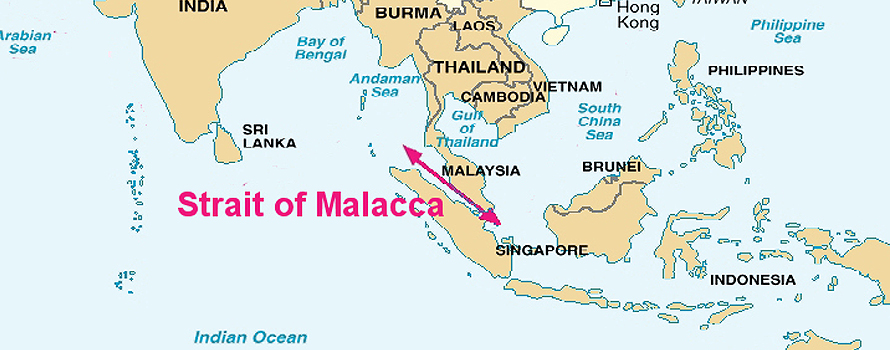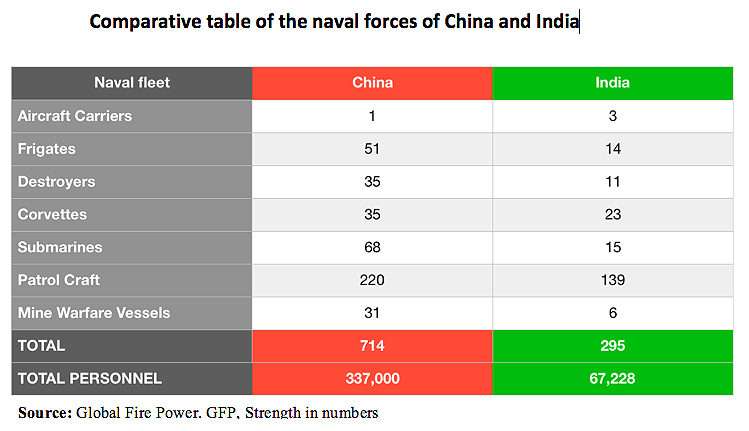This crucial shipping lane faces hard power pressures from both states as they yearn for naval control of contested waters
A thermometer to measure the future balance of power between China and India will be the Strait of Malacca, the key bottleneck that connects the northern Indian Ocean and the Asia-Pacific region. India is advancing positions towards the western mouth of the Strait in order to challenge the expansion of Chinese maritime interests, which pay greater attention to Malacca.

▲Map of the Indo-Pacific region [US DoD]
ARTICLE / Alejandro Puigrefagut [Spanish version]
Maritime routes are the basis of trade and communication between more than 80% of the countries of the world. This fact makes the natural geographic location of the States a great strategic feature. An especially important point for maritime traffic is the Strait of Malacca, key for trade in the region with the largest population on the planet.
The Strait of Malacca, which connects the South China Sea with the Burma Sea on its way to the Bay of Bengal, is the busiest commercial crossing in the world and, therefore, is a strategic place. Through this corridor that surrounds the western coast of the Malay peninsula and the Indonesian island of Sumatra, approximately 60% of the world's maritime trade transits, exceeding one hundred and fifty ships per day and is the main source of oil supply for two of the main Asian consumers; the People's Republic of China and Japan. This geographical point is key for the entire Indo Pacific region, thus ensuring the free movement of ships becomes strategic. That is why many States in the region, including China and the United States, see the need for protection of this passage in order to be able to supply themselves, export their merchandise and not be blocked by the control of a third country over this area.
In relation to China it is not easy to think that a blockade of its supply due to problems in the Strait of Malacca will happen. In order for this to happen, an armed conflict of great dimensions would have to be generated, propitiating this blockade by a subject that could control - and potentially interrupt - the passage towards the other countries of the region. This potential risk, which today can only be generated by the United States Navy, forces China to be alert and have to develop sufficient military capabilities to protect what it considers its territories in the South China Sea and, by extension, the supply of vital resources that must necessarily cross the Strait of Malacca.
 |
The positions and presence of the Asian giant in the South China Sea and in the areas adjacent to the Strait of Malacca have increased during the last years, in order to increase its influence on the States of the region. Moreover, to defend its oil and natural gas supplies (from the Persian Gulf), China has extended its presence to the Indian Ocean, although this is not enough. The reality is that in this area there is a great competition between two of the Asian powers with more influence in the region: China and India. Due to the increasing presence and influence of the People's Republic in the Indian Ocean, India has been forced to take proactive measures to improve peace and stability in the region, mobilizing and expanding its presence from its east coast towards the Strait, in order to rebalance the regional power. With this, India can dominate the western access to the Strait and, therefore, have a longer reaction time to maneuver in the Indian Ocean as in the Strait itself and, even, access to the waters of the South China Sea more agilely.
At the same time, this growing approximation of India to the South China Sea, is observed with concern in Beijing, and even, some analysts see India as a threat if an hypothetical case of a war between the two regional powers could occur and India were to block the Strait and, therefore, China's access to certain raw materials and other resources. For this reason, China has carried out various military maneuvers in the past three years together with third States in the Strait of Malacca, especially with Malaysia. During the first exercises in the area, the Ministry of Defence of the People's Republic of China concluded that bilateral relations with Malaysia were strengthened in terms of cooperation in security and defence and that "increase the capacity to jointly respond to real security threats and safeguard regional maritime security.” In addition, for China, the protection of the Strait is a priority because of its great strategic value and because countries like the US or Japan also want to control it.